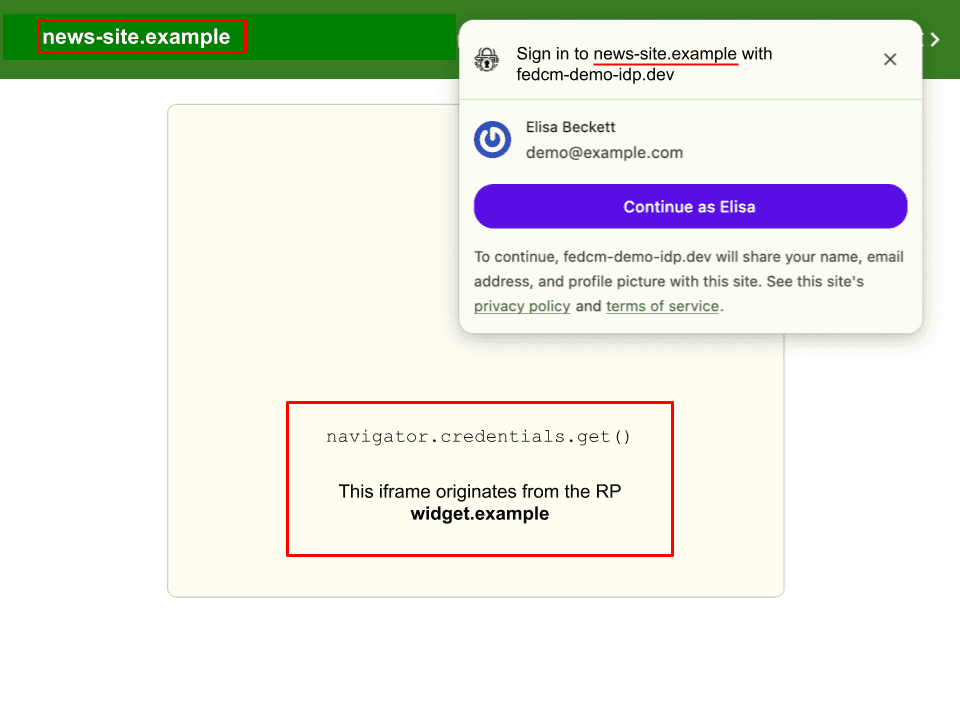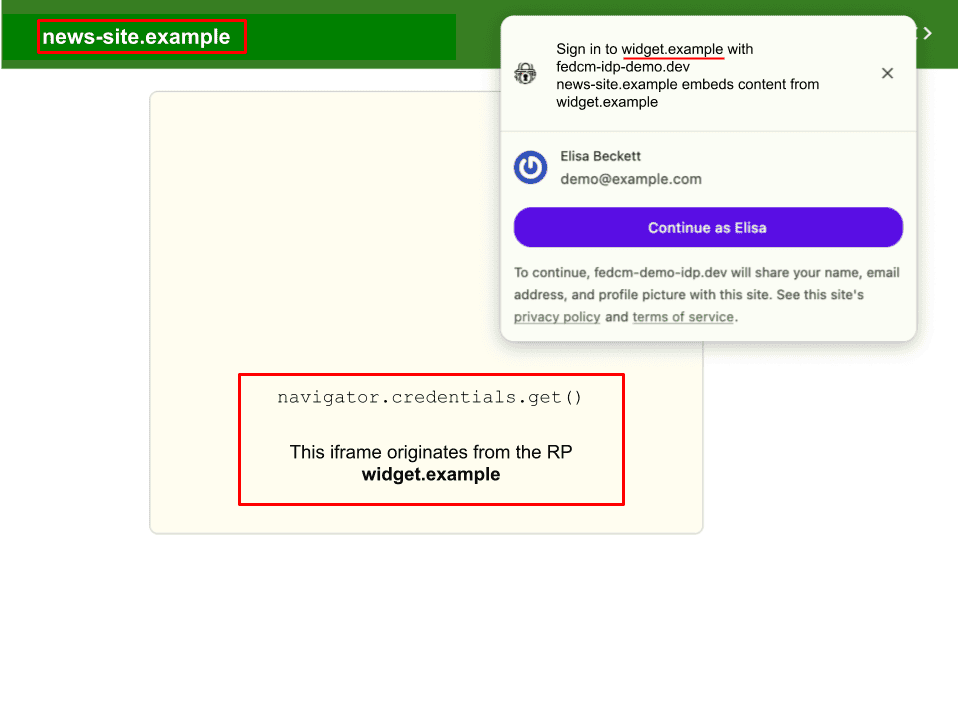From Chrome 142, you can opt to display the iframe's domain in the FedCM UI when the Relying Party (RP) is embedded as a third-party iframe on another site. This feature enhances transparency for users when they are signing in to a service that's embedded on a different website.
Background
Previously, when FedCM was invoked from within a cross-origin iframe, the FedCM dialog UI would only display the top-level site's domain. This could create confusion for users if the service they were interacting with was different from the top-level site. For example, a user might be on a news website that embeds a commenting widget. When the user tries to sign in to the commenting widget, the FedCM dialog would only show the news website's domain, not the commenting service's domain:

To address this, Chrome now has a way for IdPs to indicate the iframe's domain where the token is sent to in the FedCM dialog in addition to the top-level site's domain. This provides a clearer picture to the user about which third-party services are involved in the sign-in process.

Implementation
The IdP's client metadata endpoint
receives both a client_id and optionally a top_frame_origin, for example:
GET /client_metadata_endpoint?client_id=1234&top_frame_origin=https%3A%2F%2Ftop-frame.example HTTP/1.1
Host: idp.example
Origin: https://iframe.example/
Accept: application/json
Sec-Fetch-Dest: webidentity
The IdP can then implement custom logic to determine if the RP and the top
level site are the same party. If the RP owns both the top-level site and the
iframe, the IdP may choose to only display the top-level domain, which is the
default behavior. To display both domains, the IdP needs to include the
client_is_third_party_to_top_frame_origin property in their
client metadata endpoint
response and set its value to true.
Here is an example of what the client metadata endpoint response would look like:
// In the client metadata endpoint
const clientIsThirdParty = isClientOriginDifferentFromTopFrame();
responseData = {
privacy_policy_url: "..."
terms_of_service_url: "...",
client_is_third_party_to_top_frame_origin: clientIsThirdParty,
}
When this property is set to true and RP is embedded as an iframe on another
site, the FedCM dialog will display both the top-level site's domain and the
iframe's domain. This provides the user with more context about the sign-in
request.
The default value for client_is_third_party_to_top_frame_origin is false, so
existing implementations won't be affected by this change.
There are more details in the documentation on implementing FedCM on an Identity Provider.
Try it out
You can see a live demo of this feature at fedcm-demo-rp.dev/iframe. The code is hosted in the demo GitHub repository.
We welcome your feedback on this and other FedCM features. Share your thoughts and report any issues on the FedCM GitHub repository.
